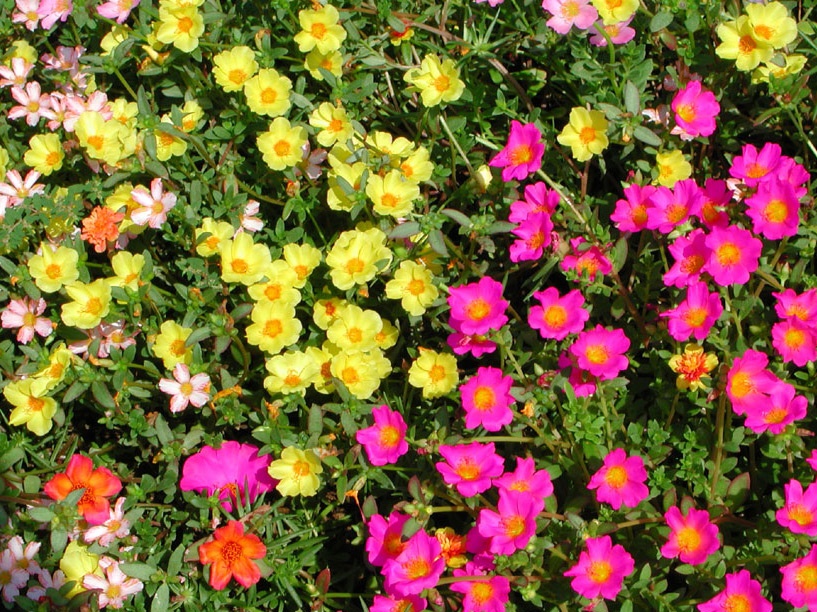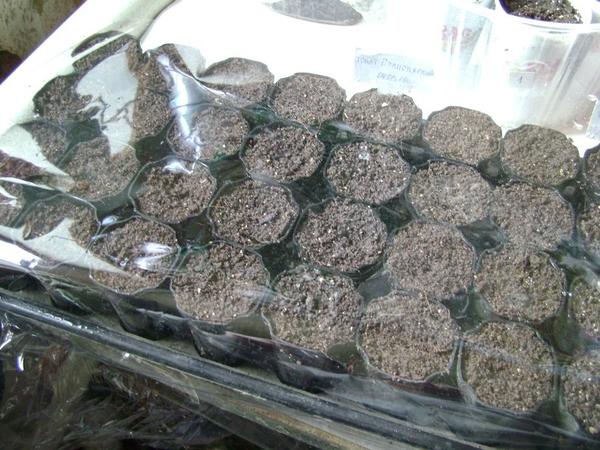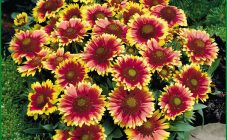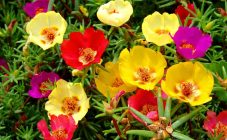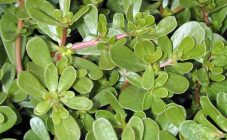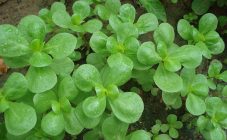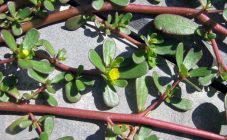Content:
Ornamental purslane is an annual garden plant that has gained great popularity among gardeners and gardeners. Looks great in the garden, in flowerpots, hanging pots, in balcony pots. When drawing up flower arrangements, purslane, due to its short stature, is planted in flower beds to the fore. To decorate a flower bed with a multi-colored carpet of terry flowers, you should familiarize yourself with the varietal variety and agricultural technology of this culture.
general information
Purslane got its name because of the seed pod, which opens on its own after the seeds are ripe. In Latin it sounds "Rogtulaca" - "open gate". Flower lovers have come up with a name for the plant - "rug", because of the ability of this culture to creep along the ground.
To date, about 200 species of purslane are known, 2 types are widespread on the territory of Russia: garden (vegetable) and decorative (large-flowered).
Gardeners with vegetable purslane are fighting like a perennial weed, not knowing about its benefits. This plant is edible, it is widely used by the inhabitants of Transcaucasia and Central Asia as an additive to salads and a seasoning for meat dishes. In the past, purslane leaves were used in medicine as a wound healing and diuretic, as well as an antidote for poisonous snake bites. Currently, it is advised to eat purslane for some diseases.
Description of the variety
Large-flowered purslane is an annual creeping plant with small double flowers with a diameter of about 2-3 cm. When flowering, the plants completely cover the ground, forming a multi-colored rug. It comes in a wide variety of colors: pink, yellow, red, white.
This flower is a ground cover, it is no more than 20 cm in height, its leaves resemble thick needles in their appearance. The stem can be green or brown. The root resembles a spindle with branches in different directions. The purslane received the love of gardeners because of the special double flowers that resemble a miniature rose or peony. It begins to bloom in early summer and pleases with the beauty of late autumn. The flowerbed looks especially beautiful, bright and elegant when a "mixture" of purslane of different colors is planted on it. A flower blooms in sunny weather and blooms one day, then withers, and another comes to replace it. Not everyone pays attention to the fact that after the flower withers, a box with seeds forms inside it. If they are not collected in time, they crumble to the ground.
Variety of varieties
The most famous varieties are:
- Flamenco. The size of the bush is up to 15 cm. Fleshy leaves resemble thick needles. The flower comes in different colors.
- Mango. Differs in large flowers of orange-burgundy color up to 5 cm in diameter.
- Decorative purslane Pun. It has large creeping stems. Designers love to use it in the creation of decorative flower beds. Has large flowers of various shades.
- Sunglo. A feature is the pinkish tint of the stems and the ability of the flowers not to close even in cloudy weather, unlike other varieties of this species.
- Hybrid Cream. Large flowers have a brighter color in the center.
In addition to these, there are many other varieties. Ampelny purslane is a climbing plant whose lashes can grow up to 2 meters. It is widely used in decorating outdoor terraces, balconies and loggias. A green waterfall of lashes and leaves with multi-colored blotches of flowers looks spectacular. From the best side, the following ampelous varieties have proven themselves:
- Shaherizade;
- Sonechka;
- Double Mix;
- Solar princess.
Growing and care
Purslane for breeding at home does not require special attention, being an unpretentious plant. In order for a plant to grow and develop well, it needs:
- good illumination;
- rare watering.
This flower loves well-lit growing areas. In shade, the trunks of the plant stretch out, the flowers become pale and unattractive. Since this flower is drought-resistant, it should be watered no more than 1 time per week, and you must try to prevent water from getting on the leaves. Since purslane is a succulent, it can go without moisture for a long time. Close groundwater and frequent watering can lead to root rot.
"Rug" grows well and blooms on poor rocky and sandy soils. And on the soil fertilized with organic matter, it grows, increasing the green mass and slowing down flowering.
Flower care consists in weeding from weeds and, if the seeds are planted directly in the ground, thinning the shoots.
Sowing seedlings
Growing purslane from seeds is possible in two ways: sowing them in the ground (in the southern regions) or in boxes with harvested soil mixture (where spring is late). If the seeds are sown directly into the garden bed, it should be covered with a film from the spring frost. As soon as the seedlings begin to hatch, the film is removed.
You can grow the plant through seedlings, but it has very small seeds, which are mixed with sand in a ratio of 1: 4 for more uniform germination. Purchased land for sowing the seeds of this plant is not suitable due to the presence of peat in it. Usually, the mixture for planting is prepared by themselves, taking 2 parts of coarse sand on 3 parts of garden land. Necessary manipulations to obtain the desired result:
- the soil is calcined in the oven for disinfection;
- a drainage layer is poured onto the bottom of the container or pot so that there is no stagnation of water during excessive watering;
- further, slightly tamping, impose the prepared composition;
- the substrate is slightly moistened from the spray bottle;
- shallow grooves are made in the ground with a match or a toothpick and the seeds are laid without burying them, but slightly pressing;
- the top is covered with glass, keeping the room temperature at least 20 degrees.
Periodically, the glass is raised, allowing the earth to ventilate. The soil in the container should not dry out; it is slightly moistened with a spray bottle. The first shoots appear in 1-2 weeks. If the weather is cloudy outside, the seedlings need to be illuminated for several hours a day. For hardening and excessive stretching of seedlings, it is advisable to slightly lower the night temperature in the room. After a while, when there are 2 leaves on the plants, young seedlings must be cut into separate containers or boxes at a distance of 4-5 cm from each other, trying to keep a lump of earth with roots during transplantation. Once a week or 10 days, until the plants move to a permanent residence in a flower garden, young shoots, for better survival, are fed with a mineral complex fertilizer. To harden the plant, it is required to take it out into fresh air, starting from 15 minutes, each time increasing the time spent outside. If there is no threat of frost on the street, and the plant has 9-11 leaves, you can plant it in the ground.
When planting terry purslane in a permanent place, it is necessary to maintain a distance between plants of at least 15 cm.It usually blooms 6-7 weeks after seed germination.
Flowers are planted:
- in hanging pots;
- in a well-lit place where there is no shade and partial shade;
- on the alpine slides;
You can breed purslane and dividing the bush, tearing off one branch from it and dropping it into the water. When the shoot gives roots, it can be planted in a pot on the balcony and rejoice until late autumn with small flower lanterns similar to peonies. Purslane, planted in pots and pots, needs more frequent watering due to the faster drying of the potted clod of the earth.
Advantages over other colors
The benefits of purslane include:
- unpretentious care;
- resistance to trampling;
- the presence of many beautiful flowers, a variety of shades;
Purslane diseases
Although purslane is an unpretentious plant that is resistant to various diseases, in conditions of high humidity it can be susceptible to fungal diseases. Signs of the disease: the appearance of brown bloom on leaves and flowers. The plant should be treated with a product containing copper. Another attack that a plant can be exposed to is an aphid invasion. In this case, the flowers are thoroughly treated with soapy water. If necessary, bring chemicals to help.
It will not be difficult to grow a purslane in the garden and vegetable garden, but all summer the plant will delight the owners with flowering.
